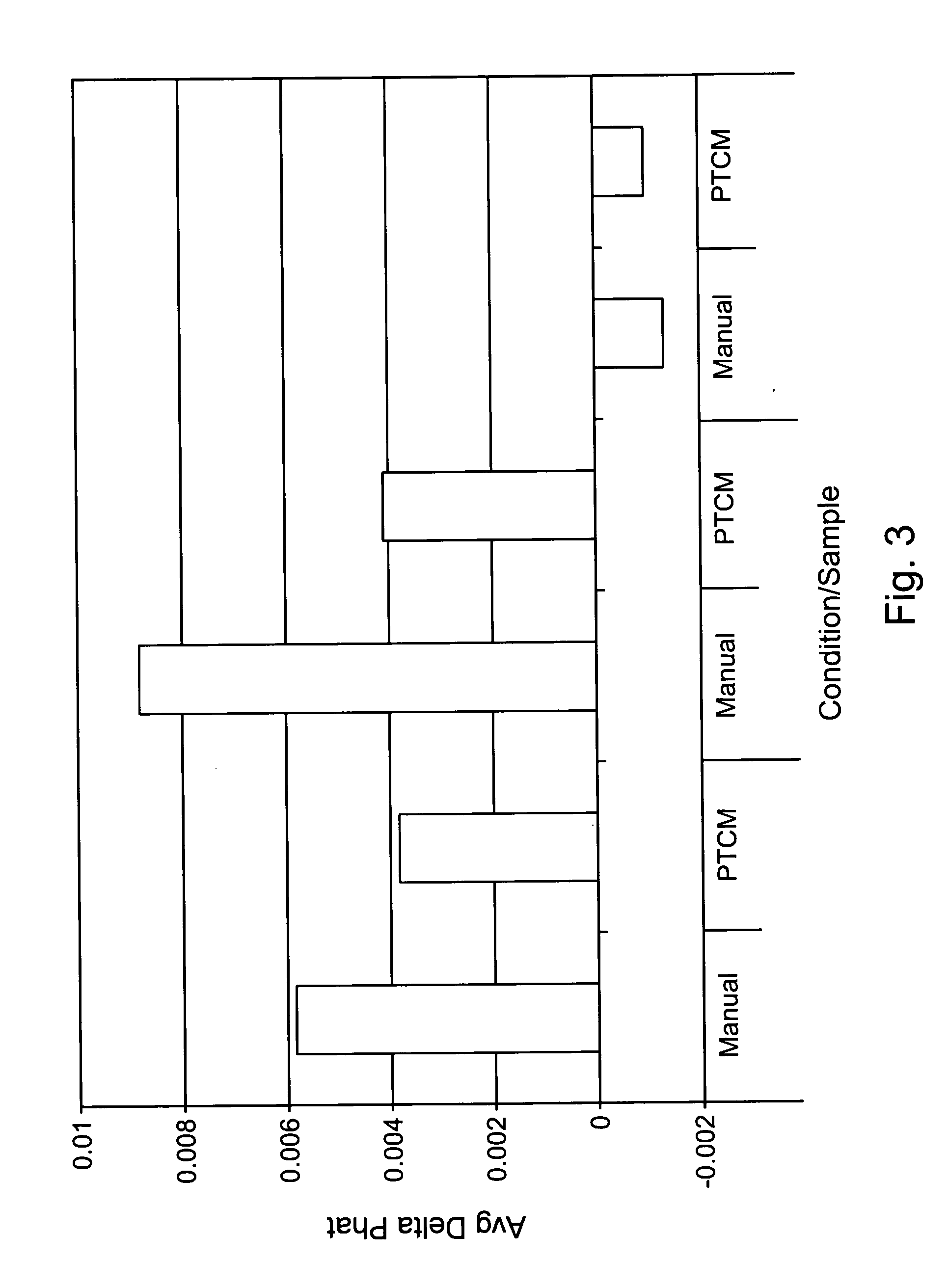Fragmentation and labelling with a programmable temperature control module
a temperature control module and fragmentation technology, applied in specific use bioreactors/fermenters, laboratory glassware, biomass after-treatment, etc., can solve the problems of difficult to obtain the required level of technician training and technician discipline, rough and imprecise detection techniques, and obscure differences between samples, etc., to achieve high repeatability and high nucleic acid
- Summary
- Abstract
- Description
- Claims
- Application Information
AI Technical Summary
Benefits of technology
Problems solved by technology
Method used
Image
Examples
examples
The following examples of methods and systems are offered to illustrate, but not to limit the claimed invention.
Estimation of SNP Sequence Frequency in Genomic DNA Pools
Labeled nucleic acid probes were prepared using methods and systems of the invention for quantitative hybridizations to target sequences at locations on a microarray chip. In particular, a genomic DNA pool was fragmented and labeled according to a method of the invention in time and temperature programmable temperature control modules. The resultant probe was stringently hybridized with known target nucleic acid SNP sequences at locations on a microarray chip. Frequencies of particular SNPs in the population were estimated based on the amount of probe bound at target locations of each possible SNP sequence.
A pool of PCR product was prepared by amplification of pooled genomic DNA from 300 human individuals having a common characteristic. The PCR primers chosen bracketed a region known to have a SNP in a particu...
PUM
| Property | Measurement | Unit |
|---|---|---|
| temperature | aaaaa | aaaaa |
| temperature | aaaaa | aaaaa |
| temperature | aaaaa | aaaaa |
Abstract
Description
Claims
Application Information
 Login to View More
Login to View More - R&D
- Intellectual Property
- Life Sciences
- Materials
- Tech Scout
- Unparalleled Data Quality
- Higher Quality Content
- 60% Fewer Hallucinations
Browse by: Latest US Patents, China's latest patents, Technical Efficacy Thesaurus, Application Domain, Technology Topic, Popular Technical Reports.
© 2025 PatSnap. All rights reserved.Legal|Privacy policy|Modern Slavery Act Transparency Statement|Sitemap|About US| Contact US: help@patsnap.com



